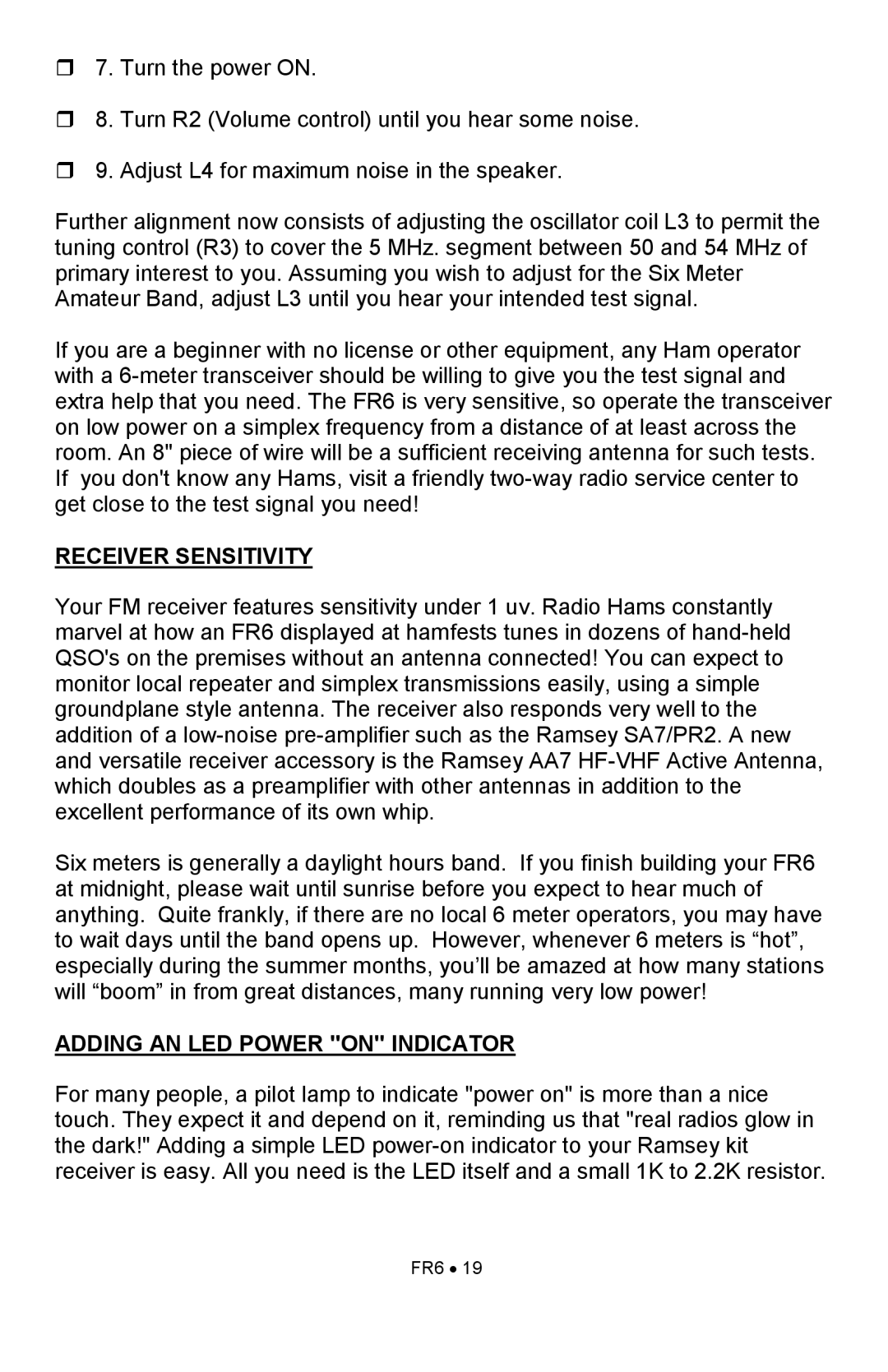7. Turn the power ON.
8. Turn R2 (Volume control) until you hear some noise.
9. Adjust L4 for maximum noise in the speaker.
Further alignment now consists of adjusting the oscillator coil L3 to permit the tuning control (R3) to cover the 5 MHz. segment between 50 and 54 MHz of primary interest to you. Assuming you wish to adjust for the Six Meter Amateur Band, adjust L3 until you hear your intended test signal.
If you are a beginner with no license or other equipment, any Ham operator with a
RECEIVER SENSITIVITY
Your FM receiver features sensitivity under 1 uv. Radio Hams constantly marvel at how an FR6 displayed at hamfests tunes in dozens of
Six meters is generally a daylight hours band. If you finish building your FR6 at midnight, please wait until sunrise before you expect to hear much of anything. Quite frankly, if there are no local 6 meter operators, you may have to wait days until the band opens up. However, whenever 6 meters is “hot”, especially during the summer months, you’ll be amazed at how many stations will “boom” in from great distances, many running very low power!
ADDING AN LED POWER "ON" INDICATOR
For many people, a pilot lamp to indicate "power on" is more than a nice touch. They expect it and depend on it, reminding us that "real radios glow in the dark!" Adding a simple LED
